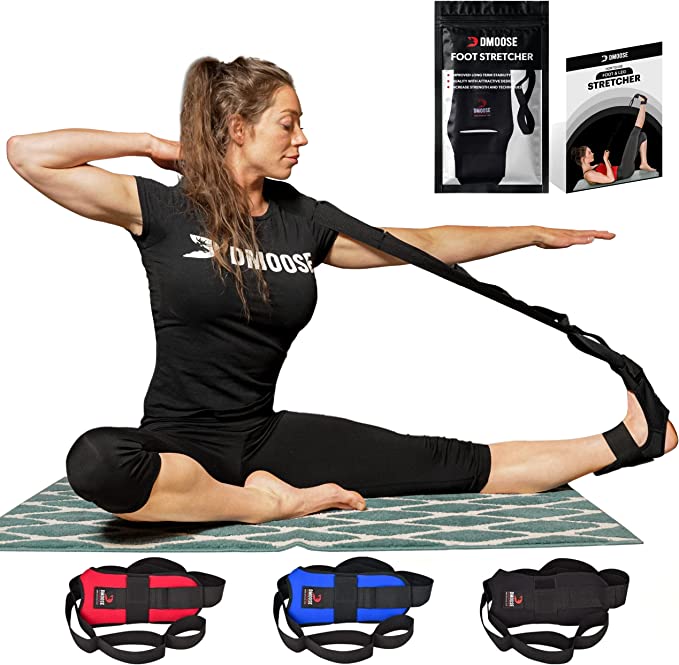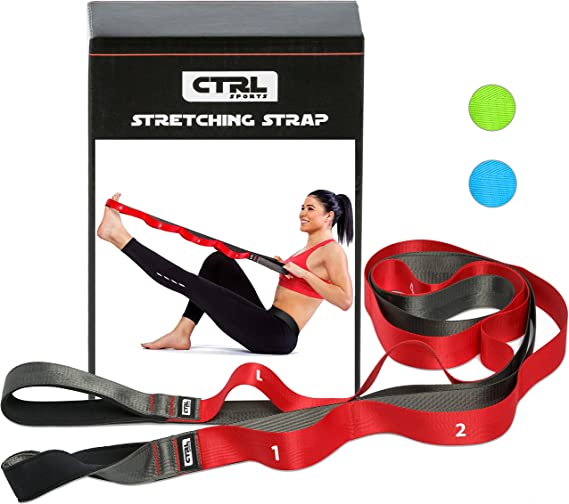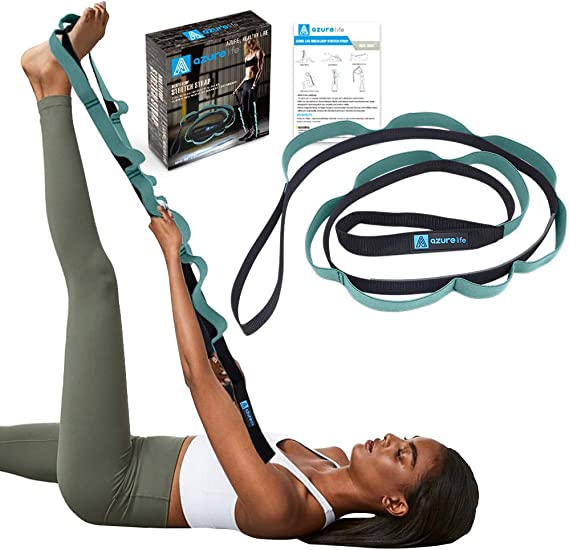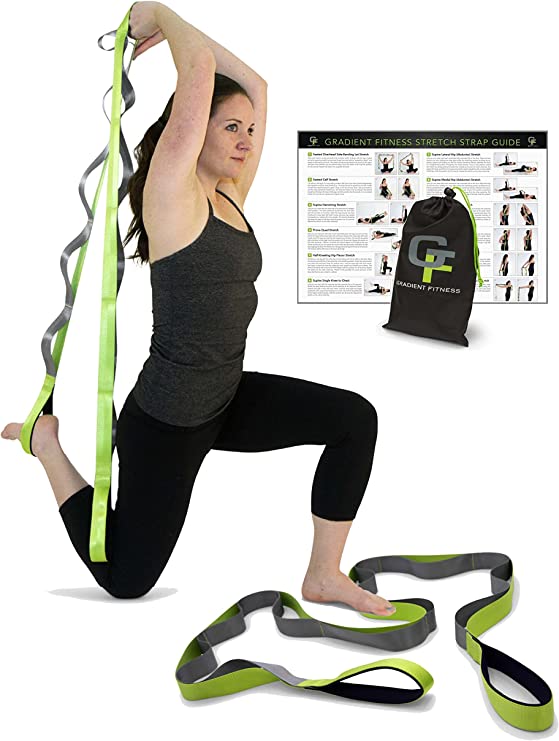Stretching should be a crucial component of any fitness regimen if you want to stay healthy and fit. Stretching increases range of motion, flexibility, lowers the chance of injury, and soothes aching muscles. We will provide you a thorough explanation of stretching in this post, along with its advantages, methods, and safety measures.
Introduction
Whether you are a novice or an experienced athlete, stretching should be a regular part of your exercise regimen. Stretching helps to increase range of motion, improve flexibility, and lower the chance of injury. Additionally, it aids in reducing muscle soreness and enhancing general physical performance.
Everything you need to know about stretching, including its advantages, various stretching methods, and safety measures you should take before beginning any stretching routine, will be covered in this article.

DMoose Calf Stretcher & Foot Stretcher for Plantar Fasciitis – Hamstring Stretcher Stretching Strap for Achilles Tendonitis, Leg Stretcher Ligament Stretching Belt for Pain Relief, Dancers and Yoga
Stretching is what?
In order to increase flexibility and range of motion, stretching entails extending or elongating your muscles. Stretching can be done as a stand-alone activity, before or after exercise.
Static, dynamic, proprioceptive neuromuscular facilitation (PNF), and active isolated stretching are some of the numerous forms of stretching that can be categorized based on the technique utilized.
Advantages of flexing
There are several advantages to stretching, including:
Improved range of motion and flexibility
Decreased danger of harm
Better posture
Increased oxygen and blood flow to muscles
Reduced pain and tension in the muscles
Enhancement of athletic performance
Less anxiety and stress

The Original Stretch Out Strap with Exercise Book – Made in the USA by OPTP – Top Choice of Physical Therapists & Athletic Trainers
Varieties of stretching
Static extending
The most popular type of stretching, known as static stretching, entails keeping a stretch posture for a lengthy time. It is typically done as a stand-alone activity or after physical exertion. Stretching while still increases range of motion and flexibility.
Flexible stretching
In order to warm up your muscles and joints for exercise or activity, you can use dynamic stretching. Flexibility, range of motion, and athletic performance are all enhanced.
Stretching using proprioceptive neuromuscular facilitation (PNF)
In order to increase flexibility and range of motion, PNF stretching includes tightening and releasing the muscles. Typically, a partner or therapist is used to assist in the process.
Active stretching isolated
Stretching that is active and isolated entails holding a stretch for a brief time before releasing it. It is typically carried out prior to exercise in order to warm up the muscles and get them ready for action.

Stretching Strap with Loops – Non Elastic Stretch Band for Physical Therapy, Yoga Strap for Stretching Equipment, Stretch Bands for Exercise and Flexibility – Fascia, Hamstring & Leg Stretcher Belt
Measures to take before extending
To prevent injury or muscular strain, it is crucial to take basic measures before beginning any stretching program. These safety measures include:
Stretching before warming up.
Avoid overextending.
Stretching is gradually intensified and prolonged.
Sustaining each stretch for at least 15 to 30 seconds.
During stretching, stay away from bouncing or jerking motions.
How to stretch correctly and securely
Follow these tips to stretch safely and effectively:
Warm up: To get your muscles ready for activity, warm up before stretching.
The best stretches are those that target the particular muscles you wish to stretch.
Hold each stretch for 15 to 30 seconds, then repeat many times.
Stretching while taking calm, deep breaths.
Try not to tense the muscles you are stretching; instead, try to relax them.
Don’t push it: Avoid pushing your body to extend past its normal range of motion. This may lead to harm.
Repeat on the other side to ensure that you stretch your body evenly on both sides to prevent muscle imbalances.
After stretching, cool down by performing some easy movements to assist in muscular relaxation.

A AZURELIFE Stretch Strap with 11 Loops, Half Elastic Stretching Strap Band – Stretch Tool for Yoga Physical Therapy, Dance and Pilates, Gymnastics, Hamstring Strength Training with Instruction Guide
Advice on maximizing the benefits of stretching
The following advice will help you make the most of your stretching routine:
Stretch frequently: To keep your range of motion and flexibility, stretch frequently.
Stop stretching if you experience any pain or discomfort. Pay attention to your body.
Keep your body hydrated by drinking a lot of water before and after stretching.
Use props: To help you comfortably enter a stretch position, use objects like straps or blocks.
Stretching can be paired with other activities, such as yoga or Pilates, to increase flexibility and enhance general physical performance.
How frequently ought one to stretch?
Your level of fitness and personal goals will determine how frequently you should stretch. Stretching is to be done frequently, nevertheless, to keep your range of motion and flexibility. Stretching is advised by experts at least two to three times per week.
Conclusion
Whether you are a novice or an experienced athlete, stretching should be a key component of your exercise regimen. It aids in increasing range of motion, flexibility, and injury prevention. There are several stretching techniques, so it’s critical to pick the appropriate ones and follow safety precautions to prevent harm.
Stretching is a key component of a healthy workout regimen that can enhance sports performance and lessen discomfort in the muscles. Always remember to stretch frequently, pay attention to your body, and take safety measures to prevent damage.
FAQs
Is stretching required before working out?
Yes, stretching is essential before exercising to get the muscles ready for use and lower the chance of injury.
Can stretching help to prevent sore muscles?
Stretching can help reduce muscle tension and soothe discomfort by boosting blood flow.
How long should a stretch be held?
Holding each stretch for at least 15 to 30 seconds, you should do it a minimum of four times.
Can stretching enhance performance in sports?
Stretching, which increases flexibility and range of motion, can help athletes perform better.
Is stretching after exercise required?
After exercise, stretching can assist increase flexibility and lessen discomfort in the muscles. It is advised to include stretching in your post-workout cool-down routine.

